 |
 |
 |
| |
"The simplest way to go:" A mixed methods analysis of why women who inject drugs selected long-acting injectable cabotegravir instead of daily oral PrEP.....95% of women initiated CAB Lai PrEP !!!
|
| |
| |
AIDS 2024 July 20-26 Munich
A.M. Roth1, A.K. Groves1, K.R. Amico2, E.C. McDowell1, K.M. Ward1, E. Forman1, S. Palmer1, A. Crayton1, D.S. Krakower3, A. Carrico4, K. Mims5, T.S. Bartholomew6
Institutions
1Drexel University, Department of Community Health & Prevention, Philadelphia, United States, 2University of Michigan, Department of Health Behavior and Health Education, Ann Arbor, United States, 3Harvard Medical School, Department of Population Medicine, Boston, United States, 4Florida International University, Health Promotion and Disease Prevention, Miami, United States, 5Prevention Point Philadelphia, Philadelphia, United States, 6University of Miami Miller School of Medicine, Department of Public Health Sciences, Miami, United States
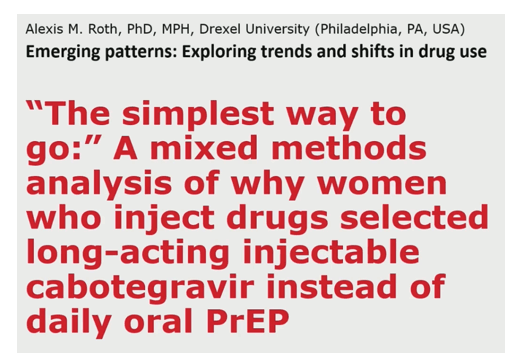
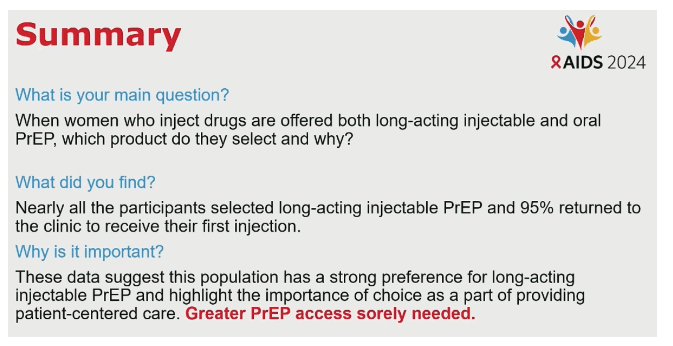
ABSTRACT
BACKGROUND: Women who inject drugs (WWID) have disproportionately high rates of HIV, and thus would benefit from HIV pre-exposure prophylaxis (PrEP). WWID who struggle with daily adherence may prefer long-acting injectable cabotegravir (CAB-LA) however, few studies have assessed product preference, and none have described the process of product selection among WWID who were offered both modalities.
METHODS: Quantitative data are from 82 English-speaking, cisgender WWID >18 years, who received a PrEP prescription (oral PrEP or CAB-LA) from a provider integrated within a syringe services program (SSP) in Philadelphia (USA). Qualitative data are from a subset who completed a semi-structured interview (n=18 who chose CAB-LA, n=7 who chose oral PrEP). All participants are part of an ongoing RCT designed to reduce HIV acquisition risk. We used thematic analysis to explore the process of product selection.
RESULTS: Most WWID selected CAB-LA (75/82). Higher frequency of injection drug use and higher average number of sexual partners were each associated with selecting CAB-LA (93% daily vs 70% less than daily, p=0.056; 1 vs 0, p<0.01, respectively). No matter which product WWID selected, the decision-making process was similar. Product selection, as described in participant interviews, was informed by their perceived risk for HIV exposure, if/how adherence might be impacted by their individual context (e.g., addiction severity), the brief individual counseling session they received prior to making their selection, and prior experience with oral and/or injectable medications. For WWID selecting CAB-LA, reducing day-to-day action to receive long-term prevention benefits was important, as few believed they would adhere daily. Those selecting oral PrEP expressed more medical mistrust and dislike of needles and injectable medications. All women felt supported in their product selection by their PrEP providers.
CONCLUSIONS: Nearly all WWID in our study selected CAB-LA, suggesting a strong preference for this modality in this group. Women, including those selecting oral PrEP, had strong rationales for their choice. Offering women a wider array of products to choose from will likely increase uptake, as it has for other sexual health tools, like contraceptives.
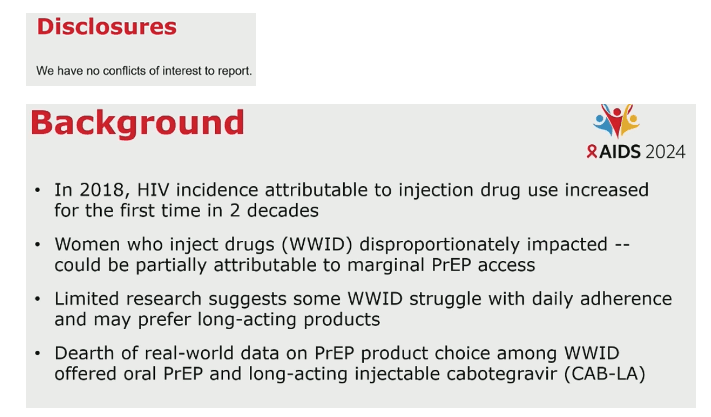

96% chose LA PrEP over oral including all those who previously used oral PrEP. Recency of drug use& # of sex partners both associated with choice for LAi PrEP. 94% of women with daily drug use chose LA CAB as did "80% of when reporting past week drug use" and 100% reporting drug use in past month. 100% with multiple sex parties chose CAB LA.
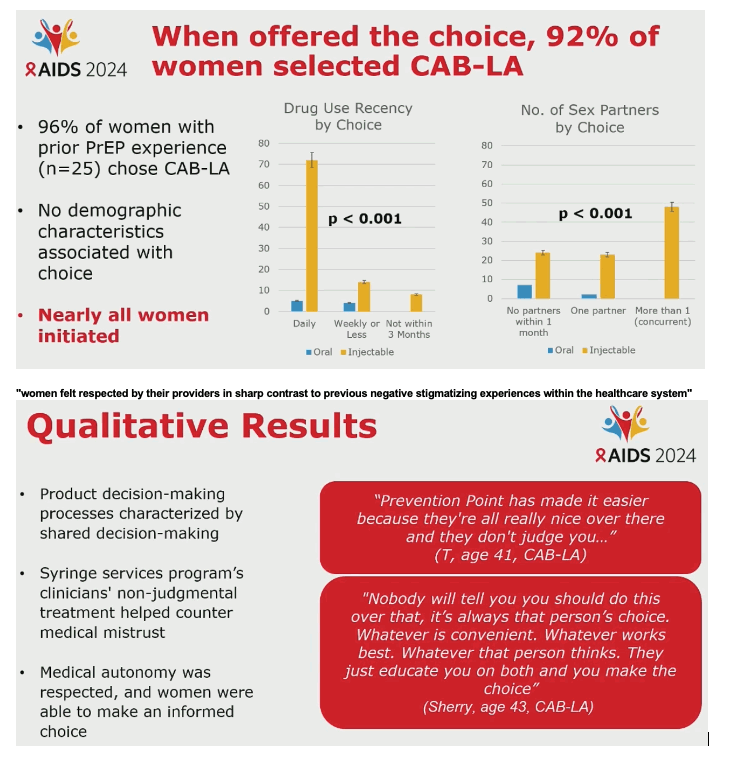
"women felt respected by their providers in sharp contrast to previous negative stigmatizing experiences within the healthcare system"
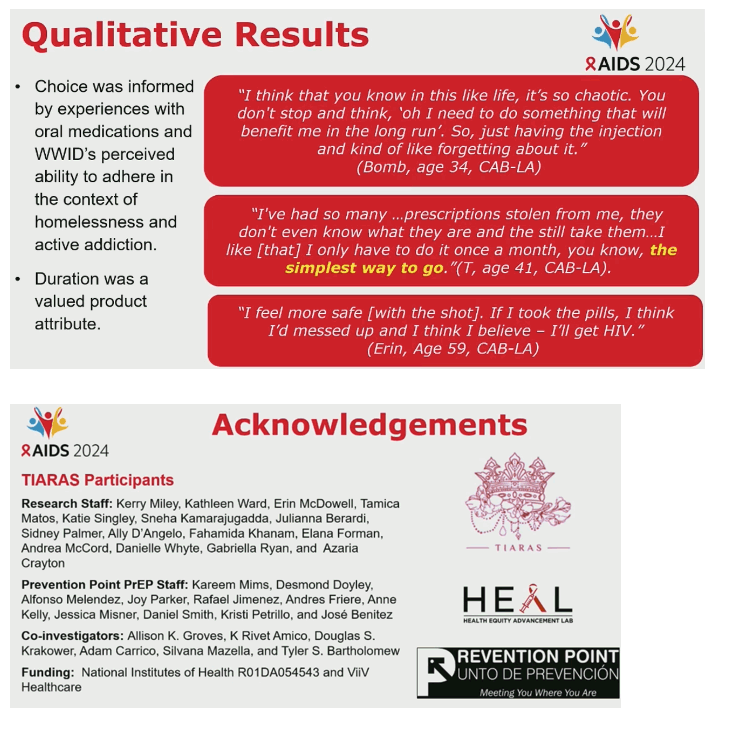
|
| |
|
 |
 |
|
|